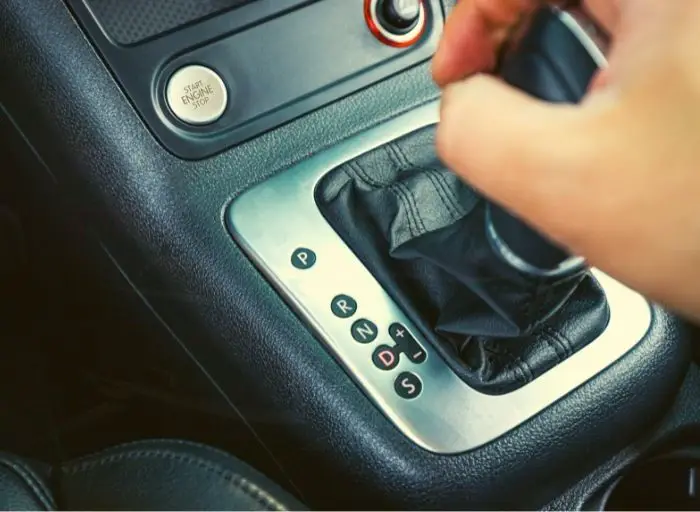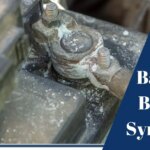
Car owners may occasionally experience jerky automatic transmissions. Automatic transmissions require more care and attention from the owner than manual gearboxes, which require little maintenance. So, why is my car with automatic transmission jerking?
The simple answer is that automatic transmissions that jerk, shake, or shift hard during a shift change may require transmission fluid replacement or a low fluid level.
Table of Contents
Why Is My Car With Automatic Transmission Jerking?
When your car’s mileage reaches 100,000 kilometers, you may notice these symptoms in the automatic transmission. Below, I’ll go over all of your transmission jerking likely causes.
1. The use of the wrong automatic transmission fluid
Every automaker has certain transmission fluid specifications, requiring the use of a fluid with a specific viscosity and performance characteristics as described in the car’s handbook. The automatic transmission will jerk and kick if you use a fluid with the wrong specifications.
In winter, you’ll notice the transmission jerking a lot, especially when you start the car after it’s been sitting in cold temperatures for a while. The difficulty, though, goes away after you warm up. This indicates you chose the improper oil at first, which thickens in the cold and prevents the automatic transmission from operating normally. As a result, more liquid oil is required.
2. Automatic transmission oil filter failure
Metal chips form over time as a result of wear in the transmission elements that occurs naturally as a result of the car’s mileage and operating circumstances, and as more wear and tear occurs, more chips form.
The AT oil filter will jam over time as a result of the metal particles and will be unable to supply the proper amount of fluid. As a result, the operating pressure in the system will drop, affecting the friction discs. These discs will not stop at the appropriate time or with sufficient force, causing them to slip. This is why you’ll experience shocks and vibrations when shifting gears during braking and accelerating.
In the worst-case scenario, when the fluid level is extremely low, the load on the discs will be increased, potentially causing them to burn. This is especially true when the automatic transmission jerks as it becomes hot.
As a result, it’s critical to keep an eye on the transmission fluid filter’s condition and to use high-quality ATF fluid with the manufacturer’s recommended settings. Change the filter as well as the fluid itself as needed.
3. Friction plates that fail
The automatic transmission’s friction plates operate as a clutch when shifting gears. They contract and expand in response to the transmission fluid that passes through the system under pressure.
Shocks will be felt when shifting gears if these plates are worn out. Furthermore, the transmission fluid will wear out and lose its quality much faster. The jerks, kicks, or twitching will be more powerful in the worst circumstances when the discs are severely worn or simply burned.
You may also reach a stage where shifting gears is difficult. Friction disc wear is a major issue, and repairs are impossible without dismantling and opening the automatic transmission.
4. Automatic transmission oil cooler failure
This component’s job is to keep the AT fluid cool. When the fluid’s performance deteriorates, it gets extremely hot and burns. As a result of the aforementioned factors, the automatic transmission’s overall performance will deteriorate.
The main cause of cooler failure is the replacement of old fluid under pressure. The system is put in the space between the automatic transmission and the cooling radiator when executing this technique on so-called high-pressure devices. The old fluid is then removed from the system under pressure, and a new one is added.
However, the procedure does not include changing the oil filter or flushing the box tray, which includes the radiator. As a result, dirt from the bottom climbs to the top, clogging specific transmission components such as the radiator and oil filter.
The radiator is made up of numerous little pipes and honeycombs that have been blocked with dirt. Because of the burns, the radiator’s efficiency will be greatly reduced when the temperature rises.
So, one alternative for removing the jerks when shifting gears is to clean the radiator that cools the ATF.
5. A hydraulic plate that has failed
The valve body is another name for this hydraulic plate. The AT fluid flows under pressure through this portion, which is made up of many microscopic channels. Each gear will have its own fluid channel, which, when under pressure, causes the clutches to compress or expand.
If these tubes become blocked with unclean liquid, the pressure will be insufficient to allow the clutches to operate normally. They probably wouldn’t be able to contract and compress properly, and the automatic transmission will behave jerkily.
As you may have guessed, the main cause is a failure to change the AT fluid at the appropriate time or replace it under pressure. Cleaning these channels requires disassembling and removing the transmission, which can be very costly.
Another significant factor is plate wear. This section is made up of two plates with a special plate in the middle. The solenoid’s rod in the shape of a ball sits on it. This guarantees that the pressure is kept closed (locked). The specified plate has a hole that is completely covered by the supplied ball.
The hole fractures over time, causing slight bumps when changing gears. It is important to replace the stated plate in order to cure this issue. However, the AT will need to be removed for extensive diagnosis and repairs.
6. Solenoid failure
Solenoids are special valves that manage the entry of transmission fluid to the hydraulic plate channels by opening and closing at the correct times. The solenoid may collapse over time due to mechanical wear or simple aging. As a result, they either do not close or, more commonly, do not open the channel, leading the solenoids not to perform properly and producing jerks when shifting gears throughout the automatic transmission.
The predicament is made worse by the materials used in their construction. Solenoids in modern automobiles are constructed of plastic. As a result, they can burn, lose their geometry, and cease performing properly at high temperatures. These issues do not exist with metal solenoids. To repair the solenoids, the hydraulic plate must be dismantled, cleaned, and adjusted, including the solenoids.
Conclusion
There are certain reasons why the automatic transmission in your car might jerk, but there are also some reasons that are unrelated to your transmission. When the automatic gearbox jerks or kicks while driving, the first thing you should do is run computer diagnostics. The errors, if any, will reveal the severity of the situation.
To avoid future difficulties with the automatic gearbox, keep an eye on it and change the oil and filter on a regular basis.
Hi there! I’m Naomi O’Colman. I’ve got years of experience working at an auto repair shop here in Texas under my belt. On top of that, ever since I was a kid I’ve been passionate about the auto industry. Since I’ve joined the team at automotivegearz.com I’ve been enthusiastically sharing my passion and insights with my readers. I’m dedicated to delivering high quality content and helping you stay up to date with the latest automotive trends and products out there!







